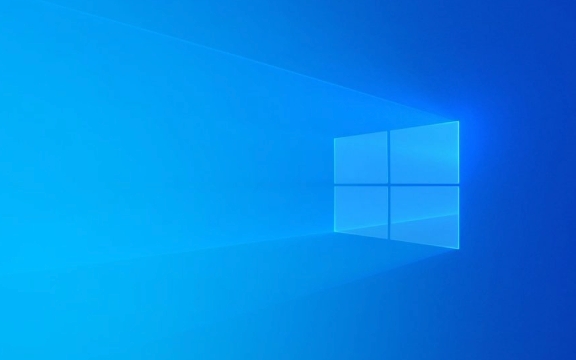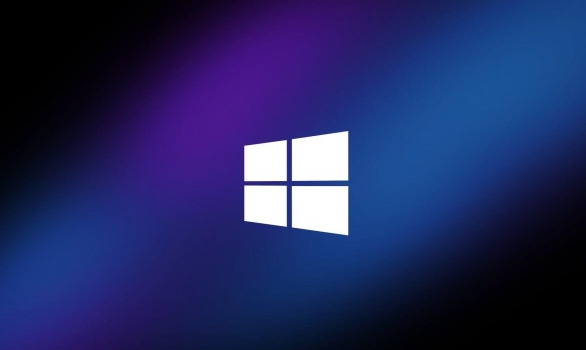Right-click the ISO file and select "Mount" to create a virtual drive. 2. Open File Explorer and access the virtual drive under "This PC" to browse or run files. 3. Eject the drive when done by clicking the eject icon or right-clicking and choosing "Eject". Mounting an ISO in Windows requires no third-party software and works on Windows 8, 10, and 11, allowing you to access the contents like a physical disc, with support for up to four simultaneous mounts, and the virtual drive disappears after ejecting until remounted.

Mounting an ISO file in Windows is a simple process that lets you access the contents of the disc image as if it were a physical DVD or CD inserted into a drive. Here’s how to do it on Windows 8, 10, and 11.

Using Built-in Windows Features (No Third-Party Software Needed)
Modern versions of Windows have built-in support for mounting ISO files. You don’t need to install anything extra like Daemon Tools or Alcohol 120%.
1. Right-click the ISO file
- Navigate to the location of the ISO file (e.g., your Downloads folder).
- Right-click on the ISO file.
2. Select "Mount"
- From the context menu, click "Mount".
- Windows will create a virtual drive and assign it a drive letter (like D: or E:).
3. Open the virtual drive
- Open File Explorer.
- Click on "This PC" or "Computer" in the sidebar.
- You’ll see a new drive listed with the name of the ISO and a DVD/CD drive icon.
- Double-click it to browse the contents—just like a real disc.
For example, if you mounted a Windows installation ISO, you’d see files like
setup.exe,boot, andsourcesfolders.
What Happens After Mounting?
Once mounted:
- The ISO acts like a real optical disc.
- You can run setup programs, copy files, or install software directly from the virtual drive.
- Some ISOs (like OS installers) may auto-run if AutoPlay is enabled.
How to Eject (Unmount) the ISO
When you're done:

- In File Explorer, under "This PC", find the virtual drive.
- Click the eject icon (?) next to the drive name.
- Or right-click the drive and choose "Eject".
- The virtual drive will disappear until you mount the ISO again.
Notes and Tips
- You can only mount one ISO at a time per virtual drive. Windows typically allows up to 4 ISOs mounted simultaneously.
- If "Mount" doesn’t appear in the right-click menu, your ISO file might be corrupted or your system may not support it (very rare on Windows 8 ).
- Make sure you have enough permissions—try running File Explorer as admin if you run into access issues.
- Some older ISO formats (like .IMG or .BIN) won’t work with this method and require third-party tools.
Basically, mounting an ISO in Windows is as easy as right-clicking and selecting "Mount"—no technical skills needed. Just remember to eject it when you’re done to free up the virtual drive.
The above is the detailed content of How to mount an ISO file in Windows. For more information, please follow other related articles on the PHP Chinese website!

Hot AI Tools

Undress AI Tool
Undress images for free

Undresser.AI Undress
AI-powered app for creating realistic nude photos

AI Clothes Remover
Online AI tool for removing clothes from photos.

Clothoff.io
AI clothes remover

Video Face Swap
Swap faces in any video effortlessly with our completely free AI face swap tool!

Hot Article

Hot Tools

Notepad++7.3.1
Easy-to-use and free code editor

SublimeText3 Chinese version
Chinese version, very easy to use

Zend Studio 13.0.1
Powerful PHP integrated development environment

Dreamweaver CS6
Visual web development tools

SublimeText3 Mac version
God-level code editing software (SublimeText3)
 How to Change Font Color on Desktop Icons (Windows 11)
Jul 07, 2025 pm 12:07 PM
How to Change Font Color on Desktop Icons (Windows 11)
Jul 07, 2025 pm 12:07 PM
If you're having trouble reading your desktop icons' text or simply want to personalize your desktop look, you may be looking for a way to change the font color on desktop icons in Windows 11. Unfortunately, Windows 11 doesn't offer an easy built-in
 Fixed Windows 11 Google Chrome not opening
Jul 08, 2025 pm 02:36 PM
Fixed Windows 11 Google Chrome not opening
Jul 08, 2025 pm 02:36 PM
Fixed Windows 11 Google Chrome not opening Google Chrome is the most popular browser right now, but even it sometimes requires help to open on Windows. Then follow the on-screen instructions to complete the process. After completing the above steps, launch Google Chrome again to see if it works properly now. 5. Delete Chrome User Profile If you are still having problems, it may be time to delete Chrome User Profile. This will delete all your personal information, so be sure to back up all relevant data. Typically, you delete the Chrome user profile through the browser itself. But given that you can't open it, here's another way: Turn on Windo
 How to fix second monitor not detected in Windows?
Jul 12, 2025 am 02:27 AM
How to fix second monitor not detected in Windows?
Jul 12, 2025 am 02:27 AM
When Windows cannot detect a second monitor, first check whether the physical connection is normal, including power supply, cable plug-in and interface compatibility, and try to replace the cable or adapter; secondly, update or reinstall the graphics card driver through the Device Manager, and roll back the driver version if necessary; then manually click "Detection" in the display settings to identify the monitor to confirm whether it is correctly identified by the system; finally check whether the monitor input source is switched to the corresponding interface, and confirm whether the graphics card output port connected to the cable is correct. Following the above steps to check in turn, most dual-screen recognition problems can usually be solved.
 Fixed the failure to upload files in Windows Google Chrome
Jul 08, 2025 pm 02:33 PM
Fixed the failure to upload files in Windows Google Chrome
Jul 08, 2025 pm 02:33 PM
Have problems uploading files in Google Chrome? This may be annoying, right? Whether you are attaching documents to emails, sharing images on social media, or submitting important files for work or school, a smooth file upload process is crucial. So, it can be frustrating if your file uploads continue to fail in Chrome on Windows PC. If you're not ready to give up your favorite browser, here are some tips for fixes that can't upload files on Windows Google Chrome 1. Start with Universal Repair Before we learn about any advanced troubleshooting tips, it's best to try some of the basic solutions mentioned below. Troubleshooting Internet connection issues: Internet connection
 Want to Build an Everyday Work Desktop? Get a Mini PC Instead
Jul 08, 2025 am 06:03 AM
Want to Build an Everyday Work Desktop? Get a Mini PC Instead
Jul 08, 2025 am 06:03 AM
Mini PCs have undergone
 How to clear the print queue in Windows?
Jul 11, 2025 am 02:19 AM
How to clear the print queue in Windows?
Jul 11, 2025 am 02:19 AM
When encountering the problem of printing task stuck, clearing the print queue and restarting the PrintSpooler service is an effective solution. First, open the "Device and Printer" interface to find the corresponding printer, right-click the task and select "Cancel" to clear a single task, or click "Cancel all documents" to clear the queue at one time; if the queue is inaccessible, press Win R to enter services.msc to open the service list, find "PrintSpooler" and stop it before starting the service. If necessary, you can manually delete the residual files under the C:\Windows\System32\spool\PRINTERS path to completely solve the problem.
 How to run Command Prompt as an administrator in Windows 10?
Jul 05, 2025 am 02:31 AM
How to run Command Prompt as an administrator in Windows 10?
Jul 05, 2025 am 02:31 AM
To run command prompts as administrator, the most direct way is to search through the Start menu and right-click "Run as administrator"; secondly, use the Win X shortcut menu to select "Command Prompt (Administrator)" or "Windows Terminal (Administrator)"; you can also open the run window through Win R and enter cmd and press Ctrl Shift Enter to force running as administrator; in addition, you can set shortcut properties to achieve automatic running as administrator. All the above methods require administrator permission and confirmation through UAC. Pay attention to security risks during operation.








